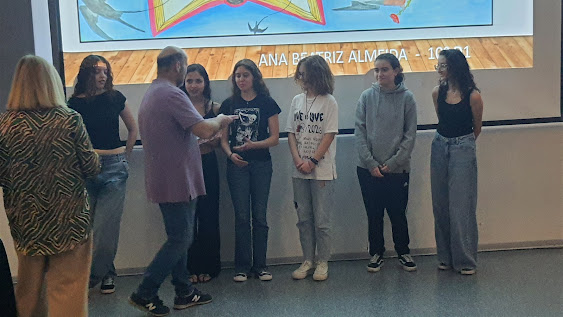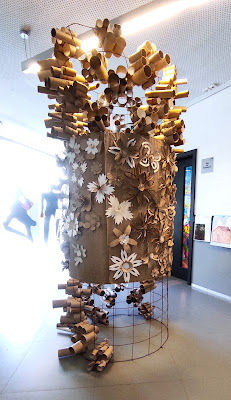Tendo em
consideração que, na época em que o "Sermão de Santo António aos
Peixes" foi pregado no Maranhão, os pregadores chamavam a si todas as
atenções e que os sermões, por sua vez, tinham um grande peso na sociedade, os
alunos do 11.ºE consideraram a hipótese de estabelecer ligações à sociedade
atual, cujos dirigentes são “pregadores” para um público pouco esclarecido em
muitos assuntos, nomeadamente o ambiente, e obtêm grande sucesso com argumentos
desgastados e com falta de sustentabilidade. Críticos da sociedade da sua
época, depressa se entusiasmaram com a ideia de expor em imagem e texto as suas
ideias.
O "Sermão de Santo António aos
Peixes" foi pregado no Maranhão, Brasil, em 13 de junho de 1654,
dia de Santo António. Foi desta forma metafórica que o Padre António Vieira discursou
contra a desumanidade com que os colonos portugueses tratavam os índios. O tema
do sermão trata de um assunto intemporal: a variedade enorme de peixes que
existem, o que fazem para se comerem uns aos outros e a sua ambição de poder,
tal como hoje, metaforicamente falando, vale quase tudo para gerar lucros, sem
respeito pelos outros.
Então, pegando nestas premissas, os alunos desenvolveram os seus trabalhos tendo por base os peixes mais famosos do Sermão, louvando-os (Tobias, Rémora, Torpedo e Quatro-olhos) ou repreendendo-os (Roncador, Pegador, Voador e Polvo).
Assim,
louvores e repreensões deram origem a ilustrações dos peixes indicados, em
Desenho A, deixando transparecer as suas virtudes e defeitos nas soluções
plásticas utilizadas por cada aluno no seu trabalho. Após a ilustração, e na
aula de português, os alunos defenderam as suas ideias numa memória descritiva
do trabalho. De seguida, em Inglês, fizeram a tradução para a língua inglesa.
Agora, é exposto o trabalho final no átrio do pavilhão 2 da escola sede.
Cristina Magalhães,
Coordenadora de Cidadania do 11.ºE









































































